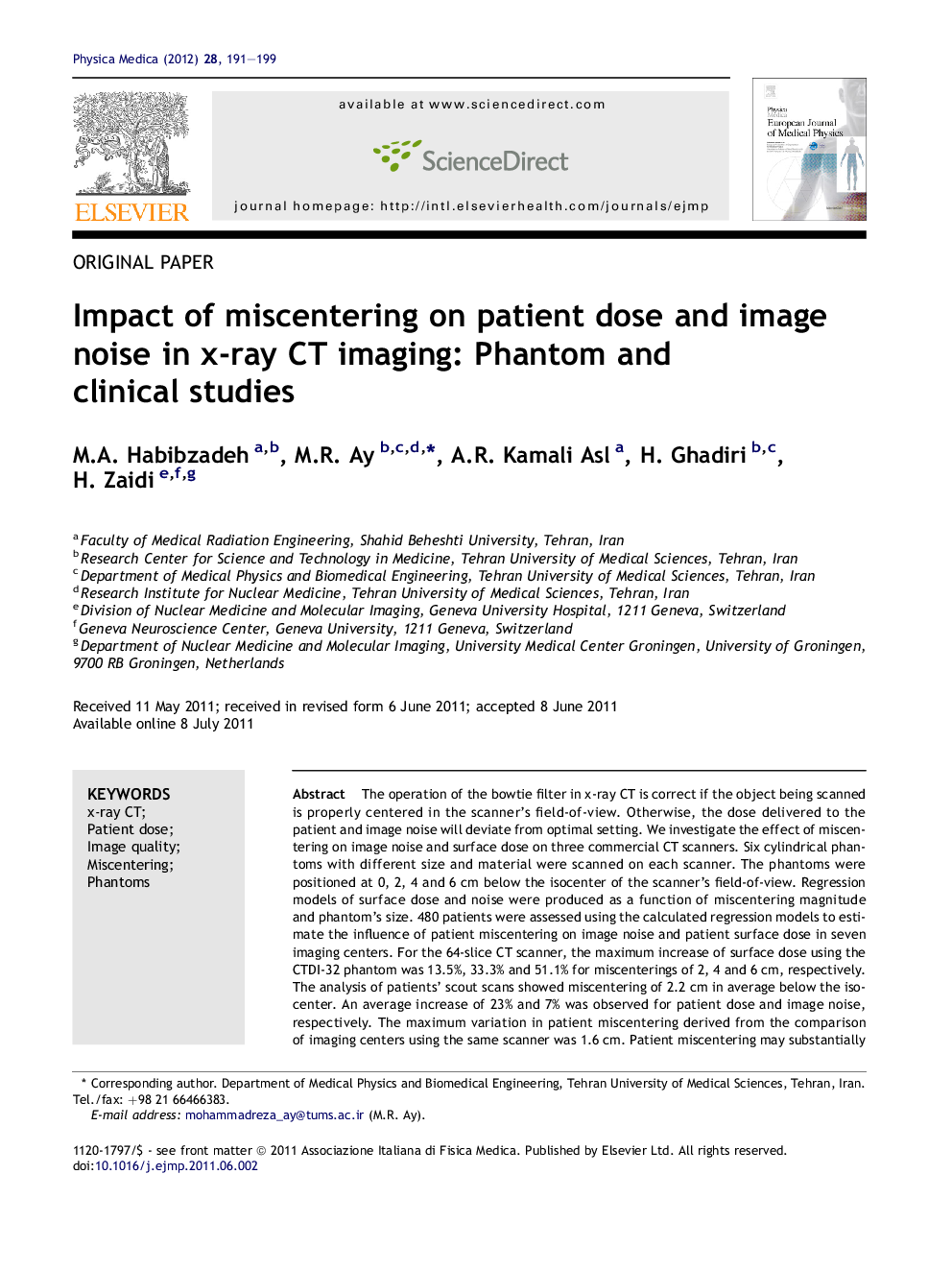| Article ID | Journal | Published Year | Pages | File Type |
|---|---|---|---|---|
| 1880751 | Physica Medica | 2012 | 9 Pages |
The operation of the bowtie filter in x-ray CT is correct if the object being scanned is properly centered in the scanner’s field-of-view. Otherwise, the dose delivered to the patient and image noise will deviate from optimal setting. We investigate the effect of miscentering on image noise and surface dose on three commercial CT scanners. Six cylindrical phantoms with different size and material were scanned on each scanner. The phantoms were positioned at 0, 2, 4 and 6 cm below the isocenter of the scanner’s field-of-view. Regression models of surface dose and noise were produced as a function of miscentering magnitude and phantom’s size. 480 patients were assessed using the calculated regression models to estimate the influence of patient miscentering on image noise and patient surface dose in seven imaging centers. For the 64-slice CT scanner, the maximum increase of surface dose using the CTDI-32 phantom was 13.5%, 33.3% and 51.1% for miscenterings of 2, 4 and 6 cm, respectively. The analysis of patients’ scout scans showed miscentering of 2.2 cm in average below the isocenter. An average increase of 23% and 7% was observed for patient dose and image noise, respectively. The maximum variation in patient miscentering derived from the comparison of imaging centers using the same scanner was 1.6 cm. Patient miscentering may substantially increase surface dose and image noise. Therefore, technologists are strongly encouraged to pay greater attention to patient centering.
